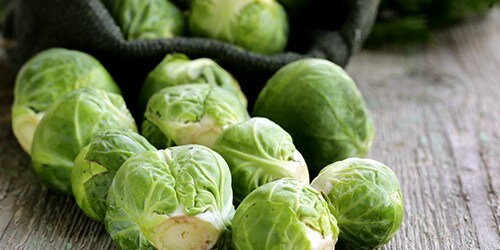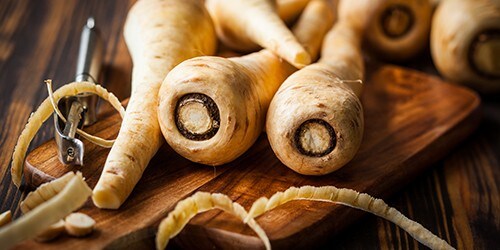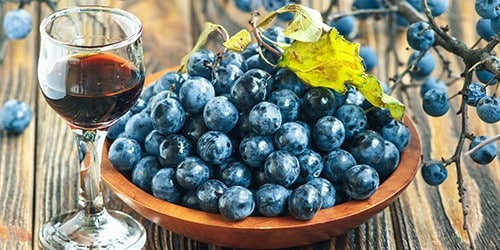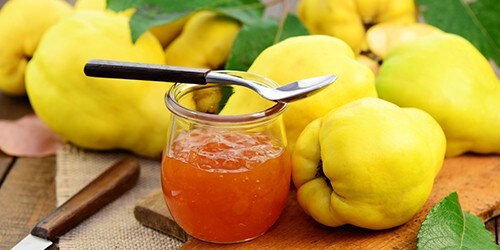
Seasonal in December
British Produce


Imported Produce


Fruit and Vegetables
Vegetables

BRUSSELS SPROUTS:
At its best: September to February
Brussels sprouts are sweet, nutty, and smoky, but depending on their size, they can vary in taste. The smaller they are, the sweeter the sprout - the key is to not overcook them. To get the best tasting sprouts, opt for roasting or sautéing them in olive oil, salt and pepper, as this brings out the natural sugars, giving them a caramelised finish. For a smoky flavour, mix with pancetta or bacon, honey for sweetness, or parmesan cheese for nutty notes.
Chef Suggestions: Sprouts are notoriously paired with your roast dinner, but equally great within salads and seasonal slaws.
We recommend: Pan-fry the sprouts with butter, a drizzle of lemon and glaze with soy sauce. Alternatively, roasted sprouts pair perfectly in a salad with honey, sweet potatoes, goat’s cheese, toasted pecans, and dried cranberries for a hint of sweetness.
Flavour Pairings : Lemon, soy sauce, smoked bacon, chestnuts, chilli, and honey.
Spices: ras el hanout (Moroccan spice mix)

PARSNIP:
At its best: September to February
Parsnips have an earthy, sweet, and slightly bitter taste, similar to a carrot. However, parsnips are best scrubbed, not peeled, like you would a carrot, to keep the best flavours locked in. They are best roasted, boiled, or sauteed. The best food pairings are typically chicken or pork, seasoned well with spices and herbs such as garlic and parsley or thyme, or even honey for extra sweetness.
Chef Suggestions: Parsnip has a toffee-like texture which is commonly roasted to release sweetness and a slight spice.
We recommend: Use the parsnip as a puree underneath scallops, or equally as a base for a faultless autumn/winter soup. For a classic dish, the parsnip can be mashed and paired with venison sausages. Parsnips are perfect for a dessert dish with their fluffy texture and sweet/nutty flavour.
Flavour Profile: “Sweet and Slightly Earthy”
Flavour Pairings: Star anise, curried spices, honey, maple syrup, pancetta, watercress, and mustard.
Fruit

Sloes:
At its best: October – December
Sloes are small fruits with a strong tart flavour. As wild plums, they are too sour to be eaten raw, but they can be infused to create a flavourful liqueur. Sloe gin is a popular way to use sloes, which exude deep, rich flavours of winter fruits. Although they do not have a strong scent, their burst skin releases a light, sweet fragrance. These berries can also be used to make jams and jellies, which can be paired with desserts to add that unique flavour and sharpness. They can also be added to meat sauces for extra infusion.
Chef Suggestions: While sloes are too tart and bitter to consume raw, they can be transformed into a delightful preserve. With their rich and intense plum taste, they can be enhanced by adding ingredients such as orange zest, cloves, cinnamon, or almond essence. Sloes can be preserved in various ways, including sloe gin, sloe wine, sloe jelly, sloe syrup, and sloe plum cheese. Sloe jelly can be incorporated into plum pies or used in sponge cakes for added flavour.
We recommend: Traditionally, sloes intended for sloe gin are harvested after the first frost, as this helps the alcohol to penetrate the fruit. However, if this is not possible, an alternative method involves pricking each fruit with a darning needle or freezing them on a baking tray for a few hours to mimic the effects of frost.
Flavour profile: Bitter and sour.
Flavour pairings: Pork, cranberry, raspberry, apple, ginger, cinnamon, cloves, star-anise, juniper, coffee, chocolate, almonds, and Jägermeister.

Quince:
At its best: October – December
The quince fruit has a distinctive flavour that combines tartness and sweetness, accompanied by floral and spicy notes. Quince also offers a wealth of health benefits: it's high in vitamin C, zinc, iron, copper, iron, potassium, and fibre. Quince is too sour to be enjoyed raw, but when cooked, its flavour transforms, revealing a delightful pink colour. While quince jelly is a popular choice, often paired with cheeses, there are plenty of other ways to make use of this versatile fruit.
Chef Suggestions: Preparing quince requires some effort fur to its tough skin that doesn't always peel away easily and a core that needs to be removed before cooking. There are various methods you can choose from, including roasting, poaching, pureeing, pickling, and grilling. One simple and popular method is to poach or stew the quince in a sugary liquid, allowing you to explore different flavour combinations by adding ingredients such as ginger, vanilla, rosemary, lemon, or cinnamon. Another option is to cook the whole fruit in water and then proceed with further poaching in sugar syrup, making jam, or even freezing the quince for later use.
We recommend: Choosing firm and unblemished quinces, and avoiding those with downy skin, as it indicates that they are unripe.
Flavour profile: Tangy and sweet with a very perfumed aroma.
Flavour pairings: Quinces belong to the same family as apples and pears, making them pair well with similar ingredients and serve as a great addition to a tarte Tatin. They complement pork and certain types of fish, as well as a variety of cheeses. Additionally, they can be enhanced with various aromatics to elevate their flavour profile.






